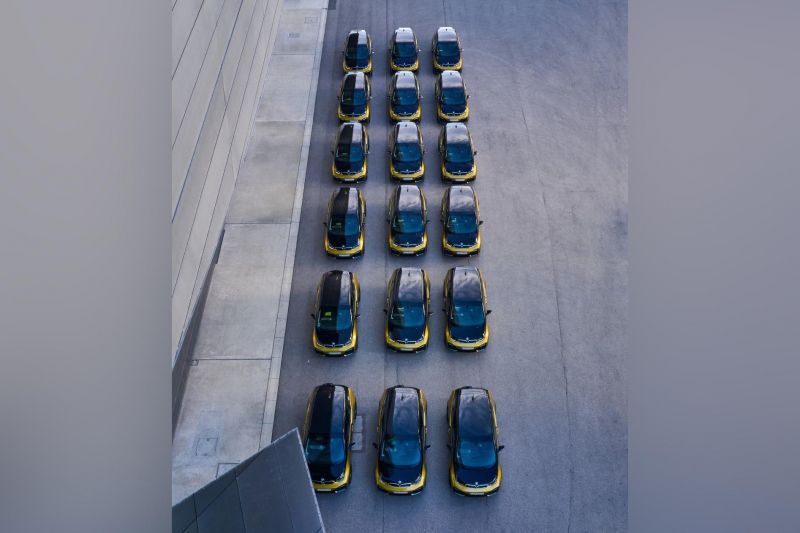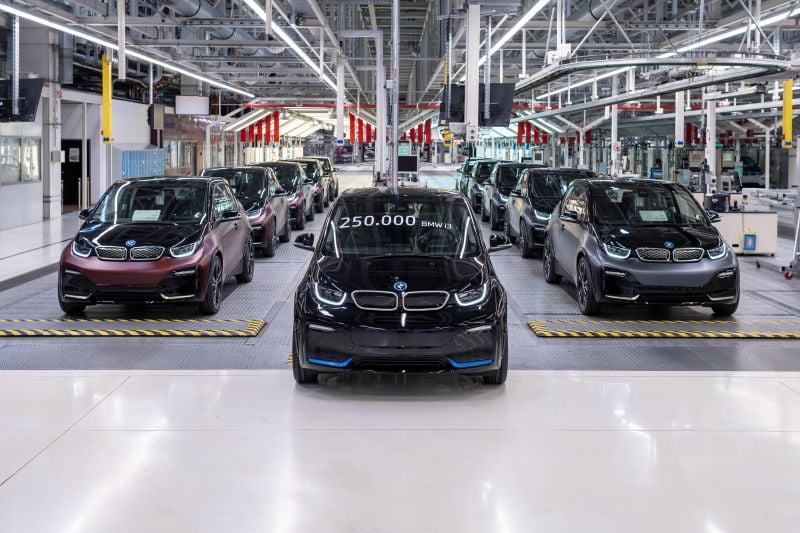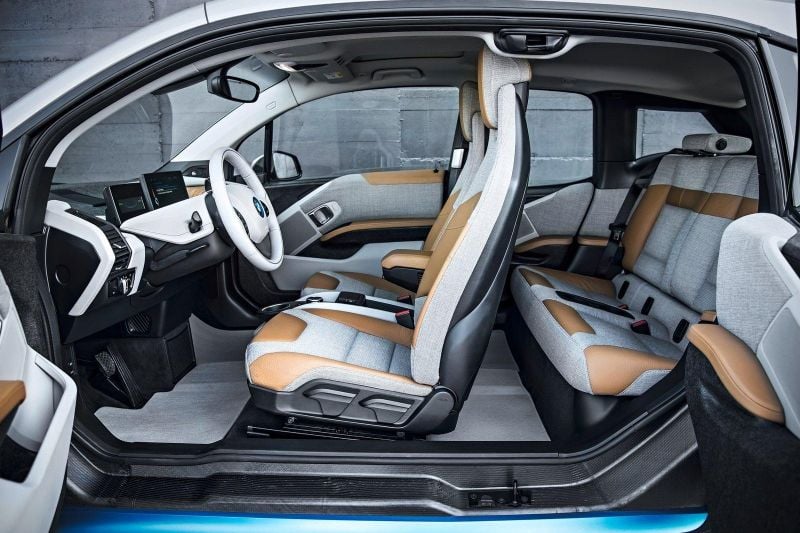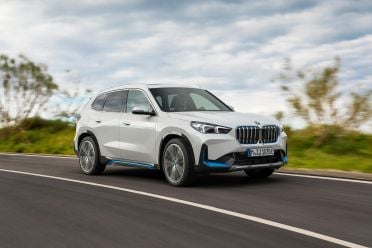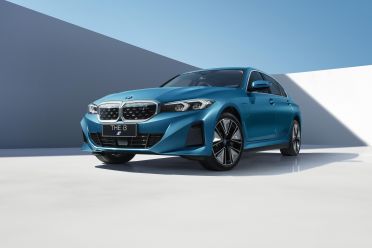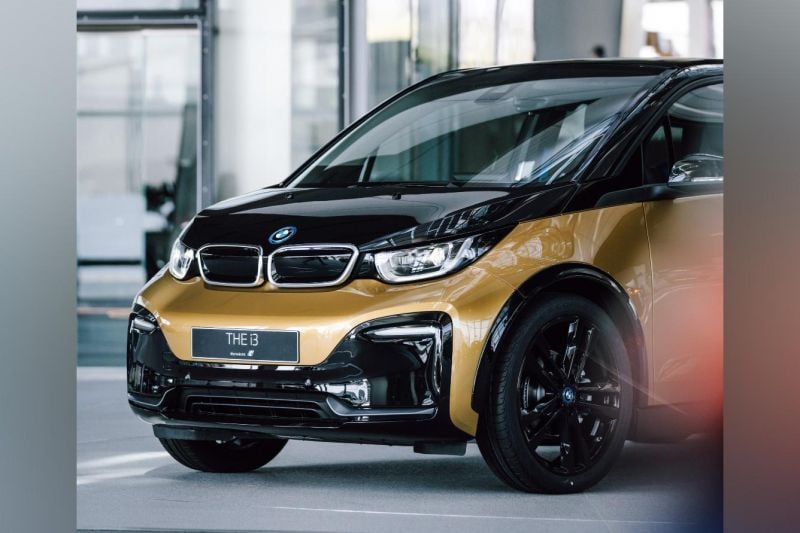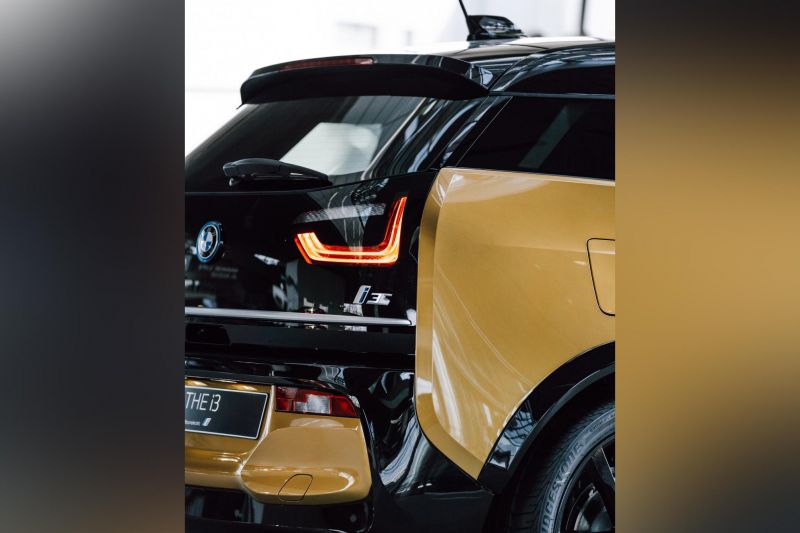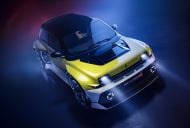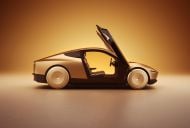It used to be tradition for long-serving employees to get a gold watch upon retirement. In the case of the BMW i3, it’s been given a gold paint job.
BMW has held a special ceremony at its BMW Welt facility in Munich, Germany, where it lined up 18 i3 electric hatchbacks, each painted in Galvanic Gold metallic with a contrast gloss black bonnet, roof and boot.
These 18 golden i3s will be put to work by Munich-based car rental company CarVia.
The cars already appear on its company’s booking portal on its website, so they appear to be ready to be rented out.
BMW held a similar send-off ceremony in 2020 to commemorate the end of production of its i8 plug-in hybrid sports car, though those vehicles were painted in different colours.
The Galvanic Gold BMW i3s are some of the last produced at the German automaker’s Leipzig plant, following production ending in July, after 250,000 sales and eight years on the global market.
BMW celebrated the end of production by producing 10 examples of a model called the HomeRun, which is finished in a Frozen matte paint.
Unlike the BMW i8 plug-in hybrid sports car sibling that also launched in 2014, the BMW i3 was initially offered with a choice of all-electric or range-extender (REx) powertrains.
The REx powertrain slotted a lightweight 650cc motorcycle engine alongside the electric motor to act as a generator. The engine never directly powered the wheels, instead only ever charging the battery.
At launch, the materials and production processes used to build the i3 were touted as the future of BMW.
The i3 is built on a ‘skateboard’ chassis where the batteries are sandwiched between the front and rear wheels, low across the floor of the vehicle, which enabled a low centre of gravity.
Weight reduction was also a major focus with the i3, with the body made entirely from carbon-fibre reinforced plastic (CFRP), which is substantially lighter yet stiffer than any steel or aluminium equivalent.
In the process of production, the raw material required for CFRP was shipped from Japan to a dedicated plant in Moses Lake, Washington for processing, and then shipped to Germany for fabrication and installation.
The manufacturing process that BMW used to manufacture the i3 was costly, but the automaker learnt many new processes it could use for its future vehicles.
The i3 featured an other-worldly interior with a flat floor and plenty of sustainable or recycled materials, with access to the rear seats achieved via a pair of rear-hinged doors.
BMW hasn’t backed down from its bold rhetoric about the i3’s futuristic credentials, even though it’s now officially dead, calling it a “classic with unmistakable charisma” and a “pioneer of sustainable mobility”.
Australian stock of the carbon-tubbed, suicide-doored city car dried up at the end of 2021. BMW Australia didn’t directly address the i3’s demise, but pledged to offer compact electric cars again in the future.
The iX1 electric SUV will be in Australia early in 2023 to pick up the i3’s mantle.
The i3 nameplate will technically live on though in the form of a long-wheelbase all-electric 3 Series sedan that’s exclusively built and sold in China.
The writing had been on the wall for the i3 for a while now. Production for the North American market ceased earlier in 2021, and stock in global markets has been dwindling as BMW geared up to launch a new generation of i-badged electric cars.
In Australia, that rollout has been led by the iX and iX3 SUVs, along with the i4 fastback. BMW has detailed a new electric platform and bold goals for its EV sales moving forward.
All new electric BMWs from 2025 onwards will use this Neue Klasse architecture, with it eventually replacing today’s FAAR and CLAR architectures.
BMW chairman Oliver Zipse recently announced the Neue Klasse architecture will debut on a 3 Series-sized sedan and a “sporty SUV”.
The architecture will use elements learned from the i3 and iX, such as an aluminium and steel platform base, a carbon-fibre body structure, CFRP elements, and body panels made from aluminium, steel and composite plastic, with the aim of keeping weight down.
Neue Klasse will support vehicles ranging in size from a 2 Series Gran Coupe to an X7, and will support vehicles with front-, rear-, and all-wheel drive and various battery packs.
MORE: BMW i3 production officially ends
MORE: Goodbye to the delightfully quirky BMW i3
MORE: Everything BMW i3





